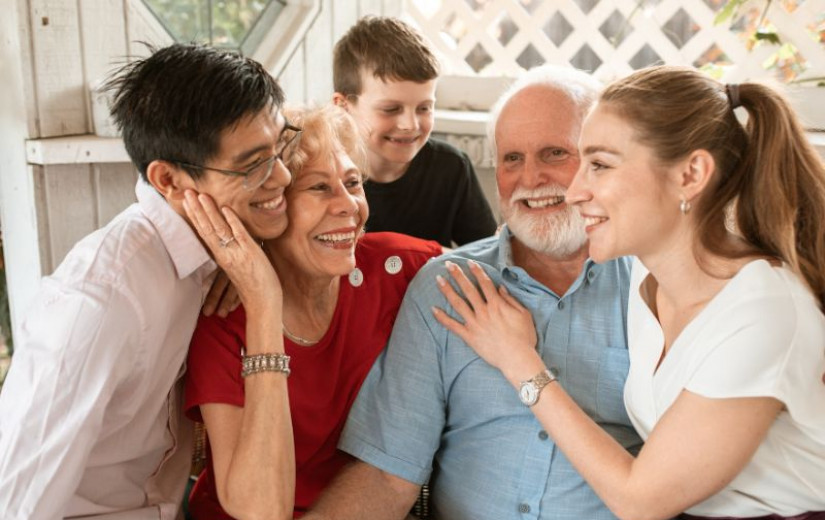
Before I had words for it, I was already writing about social-emotional learning.
I’d never heard the term when I first imagined a wounded young woman who wore headphones like armor and spoke only through song lyrics, in the early 2000s. The image wouldn’t leave me. I wove lyrics from every genre into her dialogue, watching as they became her voice, shield, and lifeline. It was both a delight and no surprise to discover there was a song for everything.
Of course, quoting song lyrics proved a copyright nightmare. But my research showed that music can speak for any emotion, and that’s in large part why it’s so compelling. Music transcends cultural and linguistic barriers and appeals to all ages; music connects people. A lullaby soothes a newborn. A teenager finds their people through a shared love of a band. A wedding dance marks the start of forever. A song from decades past brings comfort to a mind fading into memory. Aging patients find comfort and measurable benefits for cognitive, emotional, and social functioning when listening to the music of their youth (Särkämö, 2020).
While attempting to convey in words what music can communicate without words, I explored the healing power of music therapy and the profound ways social-emotional learning illuminates the inner response to hearing—and appreciating—music.
The Healing Power of Music Therapy
“Where words fail, music speaks.” —Hans Christian Andersen
In both The Secret Song of Shelby Rey, and my Young Adult novel, A Song For The Road, music is more than just a motif—it is a lifeline for the protagonist. My characters listen, compose, perform, and produce music to understand themselves, process emotions, and connect with the world around them.
I wrote Shelby’s story intuitively, drawing from my own experiences of being stopped in my tracks by an unforgettable song. Anyone who has ever felt comforted, uplifted, or energized by music understands its power to alter a mood, stir a memory, or even heal a wound. For Shelby, melodies and lyrics offer solace, helping her navigate inner turmoil and find her voice.
Music therapy—a clinical and evidence-based practice—uses music to address physical, emotional, cognitive, and social needs. Without realizing it, I had written a story that reflected real-life therapeutic breakthroughs. My original draft, written under a different title, caught the attention of a children’s hospital in Los Angeles, which began sharing it with teen patients in its music therapy program.
I’d heard that an author never truly knows what her book is about until the Q&A session at a reading. I witnessed this firsthand when therapists shared how patients were using my story to process trauma through music. While The Secret Song of Shelby Rey isn’t a therapy book, it resonated with readers who were struggling.
Music therapy's emphasis on emotional expression resonates deeply with me. Shelby, like so many of us, grapples with grief, joy, and uncertainty. Music becomes her safe space for her to explore and articulate her emotions. Whether in fiction or real life, music can heal wounds and strengthen bonds in relationships. Music holds transformative power.
For Shelby, music becomes a metaphor for resilience, showing how creative expression can lead to recovery and empowerment.
Check out Rayne Lacko's The Secret Song of Shelby Rey here:
(WD uses affiliate links)
Understanding Social-Emotional Learning (SEL)
“If a composer could say what he had to say in words, he would not bother trying to say it in music.” —Gustav Mahler
When Shelby’s story became a tool for music therapy patients, I was invited to create a book of activities for therapists to use in the field. I was honored but hesitant. I wasn’t a therapist or even a musician. I was simply a writer and researcher.
As I gathered resources, I realized that just as every patient is unique, different creative mediums speak to different people. If I focused only on music, I risked excluding young people who found their voice through dance, poetry, illustration, rap, design—any art form that helped them process their emotions.
That realization led me back to school for my master’s degree. Inspired by my research, I wrote Dream Up Now: The Teen Journal for Creative Self-Discovery, partnering with creatives to offer inspiring activities that helped teens navigate emotions through creativity. That journal, published by Free Spirit, sparked my Young Adult novel A Song for the Road and a follow-up SEL journal for younger children, My Life Journal.
Healing through the arts became more than a theme—it shaped my writing, my home life, my education, and my teaching. And I was thrilled.
According to the Collaborative for Academic, Social, and Emotional Learning (CASEL), SEL helps individuals develop healthy identities, manage emotions, build relationships, and make caring, responsible decisions. The more I studied SEL, the more I saw its themes woven into Shelby’s story.
Music is and has always been a universal language, and I’ve witnessed how it can achieve all SEL’s aims. I revisited that first draft of Shelby’s story, bringing my newly acquired SEL lens to the narrative. I dove back into Shelby’s inner world, rewriting her struggles and triumphs with greater emotional authenticity.
Bringing It All Together
The creative process behind my novel, The Secret Song of Shelby Rey, was deeply intertwined with my exploration of music therapy and social-emotional learning. Together, they inspired a story highlighting the transformative power of emotional growth and creative exploration.
At its core, The Secret Song of Shelby Rey is still a gritty, urban rock-and-roll story. It’s not therapy—it’s real life. Music heals, connects, and gives us the words we don’t always have.
Works Cited
“Fundamentals of Sel.” CASEL, 27 Nov. 2024, casel.org/fundamentals-of-sel/.
Särkämö T. Musical leisure activities to support cognitive and emotional functioning in aging and dementia: A review of current evidence. In: Baird A., Garrido S., Tamplin J., editors. Music and Dementia: From Cognition to Therapy. Oxford University Press; New York, NY, USA: 2020. pp. 103–121. [Google Scholar]









